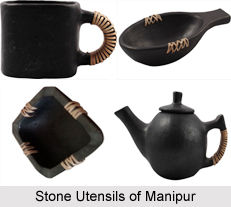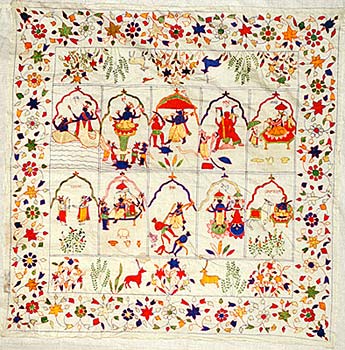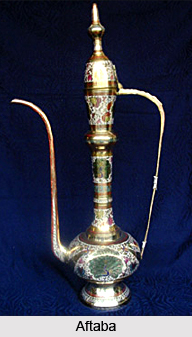 The capital of India is famous for many things including Delhi handicrafts. The market of Handicrafts in Delhi or Delhi crafts is huge because every craft of the country reaches Delhi before going anywhere else. Art and craft has found a significant place in Delhi because so many dynasties and emperors ruled Delhi.
The capital of India is famous for many things including Delhi handicrafts. The market of Handicrafts in Delhi or Delhi crafts is huge because every craft of the country reaches Delhi before going anywhere else. Art and craft has found a significant place in Delhi because so many dynasties and emperors ruled Delhi.
Every dynasty coming and ruling in Delhi brought its own unique style of art and craft. Mughals being great patrons of art and craft brought some rich legacies. Though all of them didn"t survive, there are many that are still existing and flourishing. It was the hub of crafts in ancient India and has still maintained the tradition of craft making. The range of the crafts in Delhi includes pottery, jewelry making, zardozi embroidery, silver paper and toy making.
Types of Crafts of Delhi
Some of the traditional crafts of Delhi are as follows:
Carpet Weaving
Carpet weaving came into fame through the Mughal era, when Akbar brought Persian weavers to India. The chief centers of carpet making were Srinagar, Lahore, Amritsar, Sind, Multan, and Allahabad. At one time Delhi was a centre for the manufacture of Herati carpets, which were designed after the way of those made in Herat, Afghanistan. Famous for their pleasant colors, the design of these carpets was kind of customary.
Bamboo Work
Chicks are window screens made of bamboo plank and are tied with plain or colored string in designs all over northern India. Delhi also happens to be a vital centre for chairs and stools made of the tall golden-white sarkanda grass, which grows plenty in the capital"s area.
Gems, Kundan and Meenakari Jewelry
Delhi is home to two very extraordinary kinds of jewelries encouraged and utilized to the level of an art form by the Mughals. The meeting of Hindu and Muslim cultures in the Mughal rule created a rich diversity of designs and during this time the art of Kundan was introduced to India. Western power during the British rule prompted the utilization of open-claw settings in favor to the traditional kundan gulband (choker), dastband (bracelet) and karnaphul (earrings) settings.
Ivory Carving
Delhi is where the art of ivory carving grew under the influence of the Mughal princes. The art developed a feature form with the use of floral motifs and complicated geometrical patterns worked in fine jali-web work. Delhi craftsmen also make the elephant with the hoodah, the entire structure carved out of just one piece. The chains and jewels decorating the elephant are all delicately caved out of a solid piece of ivory and each link can be separately lifted. Delhi has also grown in significance as a manufacturing centre of ivory jewelry.
Craftsmen over here also shine in manufacturing small items, such as intricately made beaded necklaces where each bead is worked in the form of a rose bud in full blossom with its leaves and stem in the surroundings carved in a complicated jali. Carved ivory bangles, ear-studs and a variety of other utility items such as paper knives, cocktail pins, decorative hairpins, ivory cuff links and buttons are some articles produced in Delhi in large quantities.
Leather ware
During the Mughal period, Delhi was a significant centre of leatherwork. Traditional leather jooties or cultural footwear and slippers, which were at times ornamented with pearls, gold and silver were the pieces beyond resistance. Embroidered bags, shoes, leather garments, leather seats, puffs or pidis were other trendy items.
Paper Craft
The colorful, feather-light kites come in all shapes and sizes, as kite flying is an essential national pastime. Tazia is the next most well-liked paper craft. A tribute paper structure, it consists of colored bits of paper pasted on a bamboo frame and carried in the Moharram procession. Tazias are used for a happy purpose too through the Phoolwalon ki Sair held every September in the capital. Another paper craft that takes a lot of hard work is Effigy-Making. The actual effect of this art can be seen when the Hindu festival of Dussehra comes round. Huge statue of Ravana, Kumbhkarna and Meghnath are erected and then burnt on Dusshera to uphold the victory of truth and justice.
Pottery
In Delhi, terracotta pottery is the one whose products make perfect souvenirs to take home. Some famous terracotta items include cutwork lamps, long necked surahis (water-pots), gamle (flowerpots), pitchers and cups of all shapes and sizes. To get hold of quality earthenware one can check the Crafts Museum in Pragati Maidan, Dilli Haat and just outside the New Delhi Railway Station.
The art of making blue glaze pottery came to Delhi via Kashmir, the Mughal emperors` favorite retreat, and rolled on to Jaipur. Apart from the predictable vase, jars, pots and vases, one can also find tea sets, cups and saucers, plates and glasses, jugs, ashtrays and even napkin rings. The color palette is restricted to blue derived from the oxide of cobalt, green from the oxide of copper and white, though other non-conventional colors such as yellow and brown have jumped into the fray too.
Shellac Bangles
Delhi and Rajasthan are two main places in India, which are regarded as the home of shellac work. Do check out the brightly colored glittery bangles, often studded with glass gems, spirals of base-metal wire, foil and spangles.
Zari, Gota, Kinari and Zardozi
Zari is gold, and zardozi embroidery is the magnificently ornate, heavily covered gold thread work practiced in Delhi and a few other cities of India. Zari threads are used extensively in handloom and power loom saris, which are manufactured all over India. Either real silver thread, gold-plated thread or an artificial, which has a copper base gilded with gold or silver color, is used for zari work.
National Crafts Museum
National Handicrafts and Handlooms Museum (NHHM), usually known as National Crafts Museum is situated on Bhairon Marg, New Delhi. The museum was set up in 1958 by the late freedom fighter and ecologist Kamaladevi Chattopadhyay, with an aim to preserve traditional art and crafts and make them commercially workable. Today, the five-acre premises holds 35,000 unique pieces reflecting Indian craft traditions throughout painting, embroidery, textiles, clay, stone and wood, all housed in the building designed by architect Charles Correa in the 1970s.
Some of the crafts that are on show at the museum are pottery, wood carvings, metal-ware crafting, image and toys sculpturing amid other things. The museum also displays folk paintings, tribal textiles along with handmade jewelry from tribes from Bihar, West Bengal, and Madhya Pradesh among other states.



















